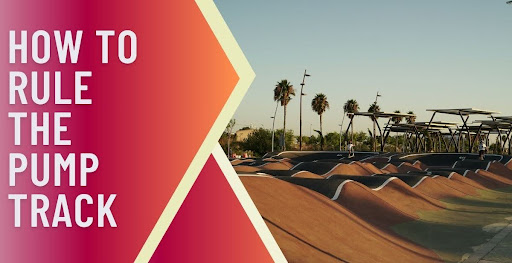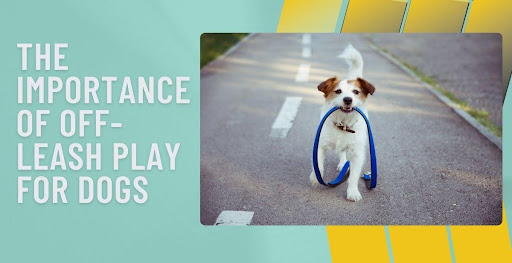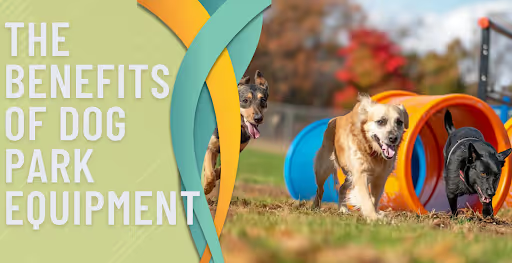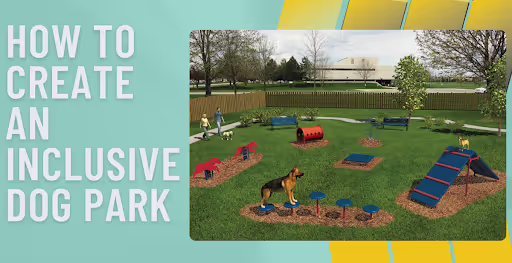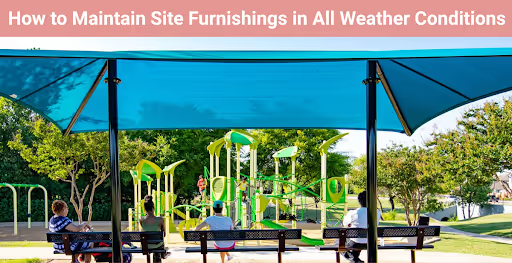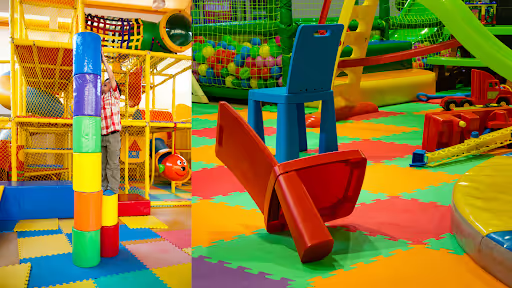Why Site Furnishings Are Important In Playground?
Playground site furnishings are essential for enhancing visitor experiences. Learn why it's important, how to choose the right furnishings, and more.


Why Site Furnishings Is Important In Playground?
Site furnishings play a crucial role in playgrounds' overall design and functionality. These elements, including benches, trash receptacles, and picnic tables, are essential amenities that enhance the visitor experience.
By thoughtfully integrating site furnishings into a playground, planners and designers can create an inviting outdoor space where families can relax and spend time, children can safely play, and communities can connect.
What Is Site Furniture?
It is crucial to distinguish site furnishings from other types of furniture, such as patio or office furnishings, as they serve distinct purposes. While office chairs, couches, and similar items are typically found in commercial spaces, they are often portable or movable.
At the same time, site furnishings are fixed installations generally used to enhance outdoor spaces or public spaces. Site furniture, also called site furnishings, are elements installed in a playground apart from the play structures.
These are often stationery items that contribute to the playground's functionality, comfort, safety, and aesthetic appeal. They provide essential services and comfort for the users of the outdoor space or public spaces, both children and their caretakers.
Site furnishings in a playground might include:
- Benches
- Picnic Tables
- Trash Receptacles and Recycling Bins
- Shade Structures
- Bike Racks
- Signage
- Water Fountains
- Lighting fixtures
- Planters or landscaping features
Benefits of Site Furnishings In A Playground

Encourages Social Interaction
Benches, picnic tables, and other seating areas within playgrounds serve as social spaces where children play together for extended periods, and older kids, like adults can interact, fostering a sense of community and promoting social skills among children.
Safety and Security
Site furnishings like trash bins, recycle bins, park benches, and lighting fixtures help maintain a safe and clean environment in the play area. Well-lit areas deter unwanted activities, while proper waste management prevents potential hazards.
Comfort for Supervising Adults
Benches and shaded areas offer caregivers a comfortable place to sit and monitor their children. It ensures adults can keep a close watch on kids while also enjoying their time in the playground.
Promotes Outdoor Learning
Site furnishings like signage can provide educational content about the playground, its history, or local flora and fauna, making the playground an extension of the classroom.
Hydration and Refreshment
Water fountains are a crucial site furnishing in a playground and parks. They provide easy access to drinking water, keeping kids hydrated during their energetic play.
Enhanced Aesthetics
Well-chosen and well-placed site furnishings can significantly enhance the visual appeal of a playground. They can add color, shape, and style, making the playground more inviting.
Supports Eco-Friendliness
Furnishings made from recycled materials or equipped for waste segregation (like recycling bins) educate children about environmental responsibility and support eco-friendly practices.
Storage and Organization
Site furnishings like bike racks or cubbies offer a secure place to store personal items, helping keep the playground organized and preventing potential tripping hazards.
Kid-Friendly Site Furniture Material
Recycled Plastic
Recycled plastic is a top contender for kid-friendly site furniture material. Not only is it durable, but it is also resistant to cracking, fading, and splintering – common problems when kids are involved.
Plus, it's a win for Mother Earth as it reduces waste and promotes a circular economy.
Wood
Nothing beats wood's natural and warm feel, making it an appealing choice for site furniture. When choosing wood, opt for durable hardwoods like teak or eucalyptus, which resist rot and pests.
However, ensure all surfaces are smoothly finished to avoid splinters. Remember, wood requires more maintenance to keep it looking its best.
Metal (with Protective Coatings)
Metal is one of the most commonly used materials in site furnishings, with varieties including steel, aluminum, and stainless steel.
- Steel furnishings are highly durable and can withstand heavy use, making it ideal for high-traffic areas. However, it requires a protective coating to prevent rust.
- Aluminum furnishings are a lighter alternative that resists rust better than steel, making it ideal for outdoor furniture in coastal areas or places with high precipitation.
- Stainless steel is more costly but offers superior corrosion resistance and a modern aesthetic appeal.
Choose pieces with a thermoplastic powder coating to make the metal more kid-friendly. This coating protects against the elements and provides a softer, warmer surface for kids to touch.
It's also available in various bright, fun custom colors that kids love.
Rubber
Rubber is an excellent material for certain types of site furniture, particularly safety surfacing or play tiles. It's soft, reducing the risk of injury from falls, and it's also durable and low maintenance.
Fabric (For Shade Structures)
UV-protected fabric is crucial for shade structures in children's play areas. The fabric should be durable, fade-resistant, and quick-drying.
Marine-grade solution-dyed acrylic fabric is popular for its durability and the range of fun colors it comes in.
Composite Materials
Composite materials, such as wood-plastic composites, combine wood's aesthetics with synthetic materials' durability. They are often used for benches or picnic tables, offering a kid-friendly surface that's less prone to causing splinters or cracks.
The Importance of Site Amenities for Playgrounds

Site amenities in playgrounds refer to the supporting infrastructure and furnishings that enhance the space's functionality, safety, and user experience. These elements go beyond the primary playground equipment (like swings, slides, and climbing structures) and cater to the needs of all users, including children, caregivers, and community members.
Playground site amenities enhance a space by providing people with clean places to kick back and relax. The most significant benefits of site amenities for playgrounds include:
More visitors: Site amenities improve the visitor experience, making people want to return to your site repeatedly.
Improved hygiene and safety:
- Keeping your park clean makes it safer for visitors and gives them fresh air.
- Installing trash cans helps keep trash off the ground.
- Preventing children from picking up these items and improving the park's appearance.
- Shade structures help protect visitors from the harmful effects of UV light, like sunburn.
Enhanced aesthetic appeal: The right outdoor seating and furniture can complement your space's design and make it appear more welcoming to visitors. You can even customize your amenities to match your location's color scheme.
10 Things to Consider When Choosing the Ideal Amenities For Your Playground
1. User Needs and Demographics: Consider the needs of different age groups and abilities. The amenities should cater to all users, including children, parents, caregivers, and other community members.
2. Playground Size and Layout: The size and layout of the playground can dictate the type and quantity of amenities. The placement of amenities should be logical and convenient without overcrowding the space.
3. Durability and Maintenance Requirements: Choose amenities made from durable, weather-resistant materials that require minimal maintenance. Materials should be able to withstand heavy use and varying weather conditions.
4. Safety: All amenities should comply with safety standards. Avoid amenities with sharp edges or pinch points, and ensure surfaces do not become excessively hot in the sun.
5. Aesthetics: The amenities' style, color, and design should complement the playground's overall theme or design. A cohesive look can enhance the visual appeal of the space.
6. Sustainability: Consider amenities made from recycled or environmentally friendly materials. It promotes sustainability and can also provide an educational opportunity for children.
7. Accessibility and Promote Inclusivity: Ensure the amenities are accessible and usable by individuals of varying abilities. The playground should be inclusive and welcoming for all users.
8. Budget: Consider the upfront and ongoing maintenance costs. While some amenities may have a higher initial cost, they may be more cost-effective in the long run due to their durability and longevity.
9. Functionality: Amenities should serve a proper function. It can range from providing seating and shade to waste disposal to storage for personal items or bicycles.
10. Vandalism Resistance: Unfortunately, playgrounds can sometimes be a target for vandalism. Consider the resilience of the amenities to common types of vandalism and how easy they are to clean or repair.
Partner With Park N Play Design for Your Playground's Site Furnishings
At Park N Play Design, we provide a range of playground amenities and furniture that can help improve your various site furnishings. Our products are designed to be durable outdoors and easy to maintain.
Whether you're looking for benches, tables, shelters, bike racks, or trash cans, we have the perfect solution. Contact us today to discuss your playground's site furnishings and get your ideal custom designs.
We look forward to hearing from you!
FAQ's
Why do site furnishings matter in playground design?
Site furnishings play a vital role in playground design as they provide comfort, convenience, and accessibility for users. Well-planned outdoor site furnishings, such as benches, picnic table, and trash receptacles, ensure a pleasant and functional environment for children and adults, enhancing the overall playground experience.
How do site furnishings contribute to a playground's functionality?
The right site furnishings contribute to a playground's functionality by providing essential amenities for users. For example, trash and recycling receptacles keep playgrounds clean and well-maintained, while water fountains provide accessible hydration options for younger kids. Additionally, bike racks encourage eco-friendly transportation to and from the playground.
What role do site furnishings play in inclusive playgrounds?
Site furnishings play a significant role in creating inclusive playgrounds that cater to children and caregivers of all abilities. By including accessible seating options, adaptive play equipment, and accessible surfacing, site furnishings can help create a welcoming environment that promotes social interaction and enables everyone to enjoy the playground together.
Are there any sustainable site furnishings options for playgrounds?
Yes, sustainable site furnishings options are available for playgrounds. These options may include wood furnishings made from recycled materials, sustainably sourced wood, or environmentally friendly coatings and finishes.
By opting for sustainable site furnishings, playground designers can reduce the environmental impact of their projects and contribute to a greener future.


